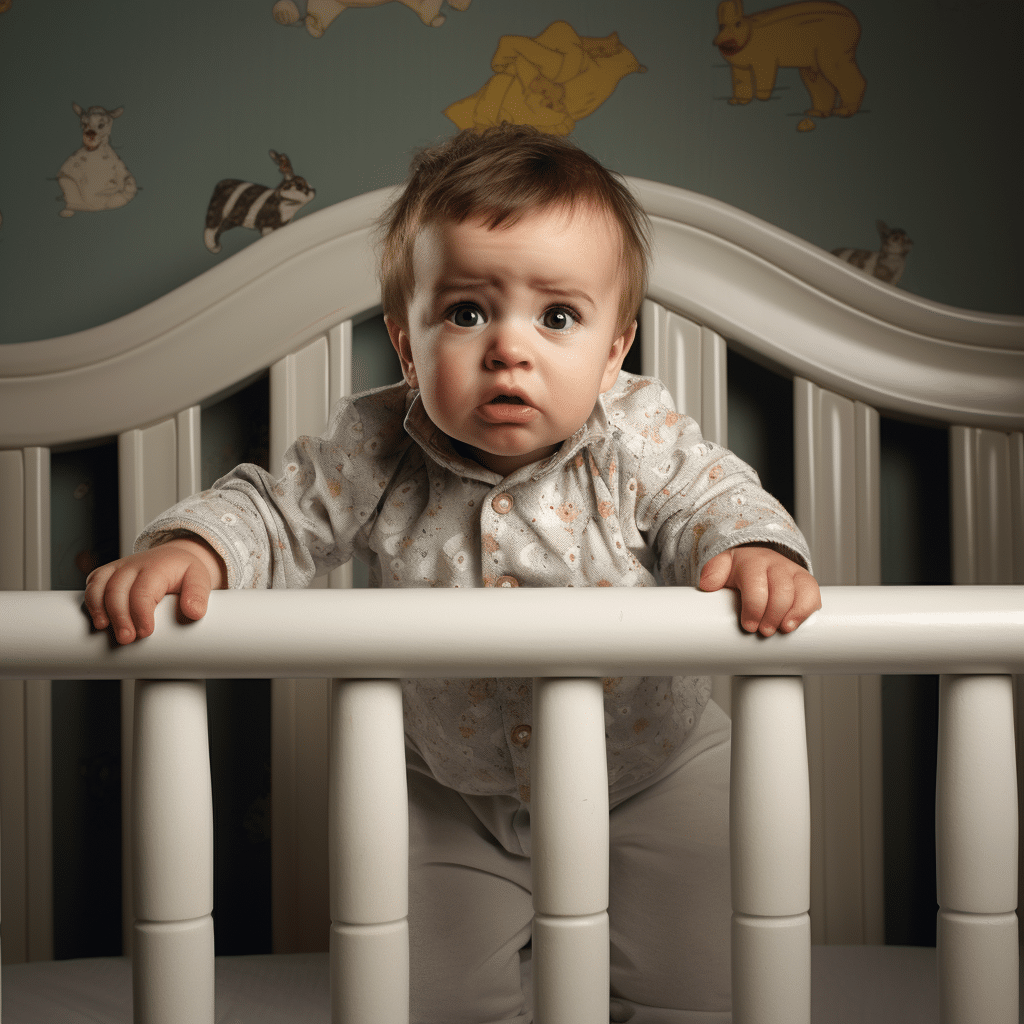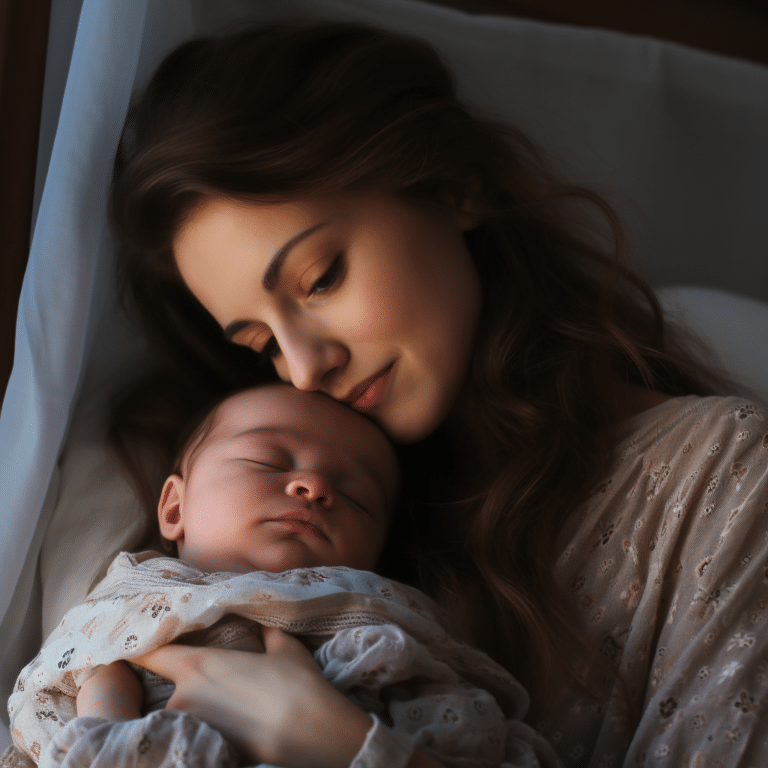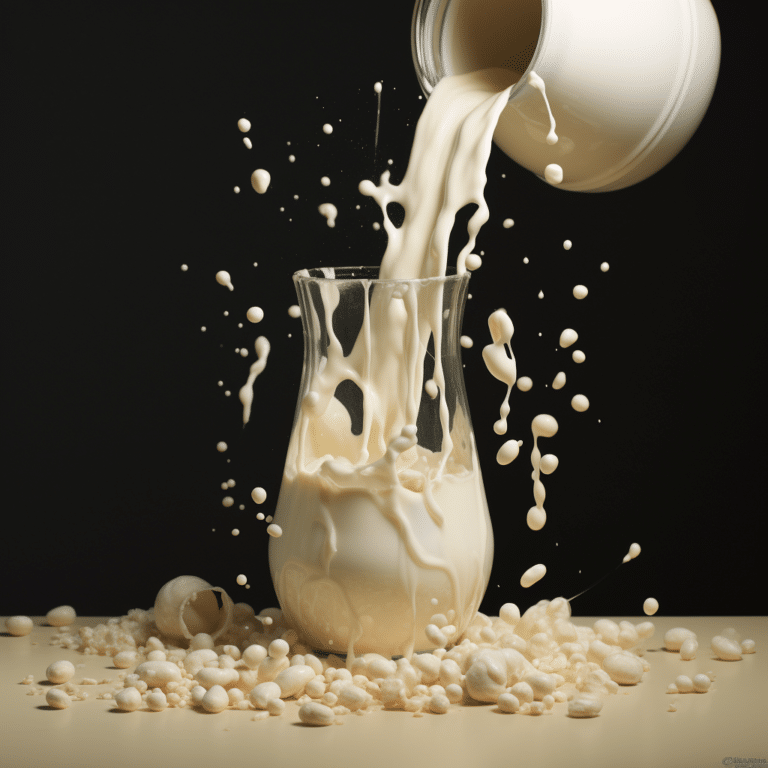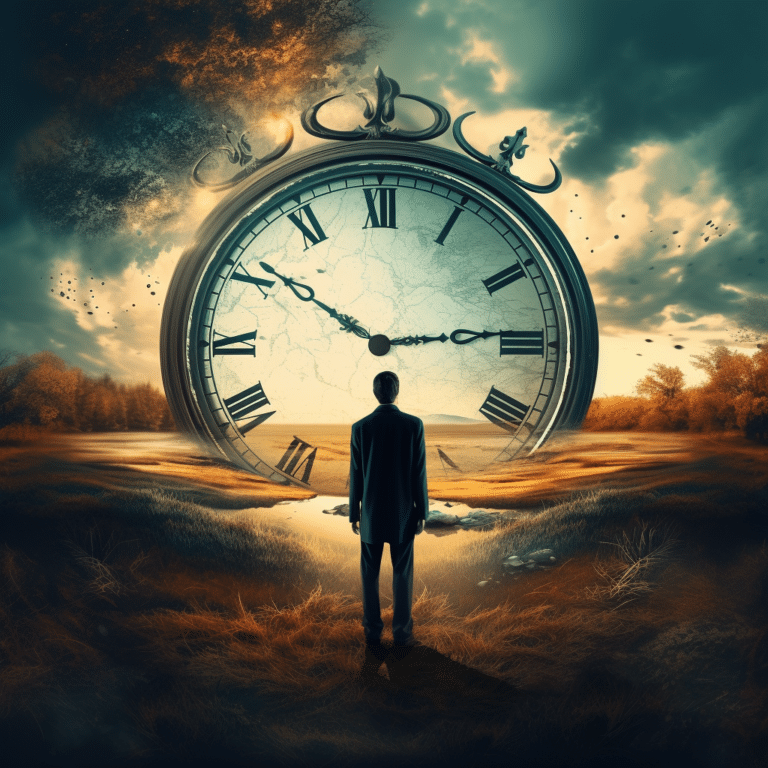Protecting Babies from Crib Head Bumps: Essential Tips
Protecting Babies from Crib Head Bumps: It’s our duty to maintain a secure atmosphere for our infants to develop and flourish. But when they begin to crawl and bump their heads against the crib’s borders, we’re left questioning what to do.
Fortunately, there are measures we can take to protect them. Investing in things like breathable bumpers, reliable mattresses, and proper sheets are essential safeguards. Additionally, you can also teach your baby to roll onto their sides so they aren’t stuck in one spot for too long. In this article, we’ll explore different ways to keep your little one safe and give you assurance in the process.
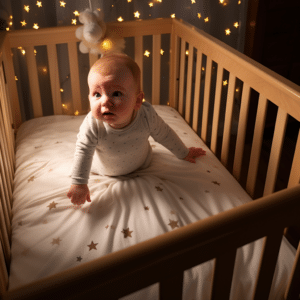
How To Protect Baby from Hitting Head in The Crib
As babies become increasingly active, the specter of bumping their heads against their cribs’ wooden rails or hard mattress surfaces Protecting Babies from Crib Head Bumps looms over loving parents. But there’s no need to despair – several preventative measures can safeguard your little one from accidental head knocks in the crib.
Use a Crib Bumper
The use of a crib bumper is viewed by many as an effective way to prevent babies from bumping their heads on the hard crib rails. Nevertheless, pediatricians have warned that these items can pose a danger due to the risk of suffocation.
Related: HOW FAST DOES MYLICON WORK
If you opt to employ a crib bumper, there are a few essential points to bear in mind. Firstly, ensure that it snuggly fits around the rails with no sagging or gaps; this ensures that infants won’t get stuck between the bumper and the crib which could be hazardous. Furthermore, make sure to settle for one that is breathable and free of toxic materials to lessen the chances of suffocation and exposure to toxins.
On the other hand, if your baby hits their head even with the use of a bumper, it may be necessary to re-position it or look into alternate options like adjusting the bed mattress height or using a sleep sack.
Adjust Mattress Height
Maintaining the right height of the crib Protecting Babies from Crib Head Bumps mattress is paramount to protecting your toddler. As they progress and develop, you’ll have to keep adapting, bringing the mattress lower to avoid hazardous falls. It’s recommended that when they are at their most vulnerable, the mattress should be set at its tallest level, making it more convenient for picking them up and placing them down.
When they start rolling around, move it midway to prevent any potential toppling, and once they can stand up and reach out for the railings, reduce the mattress to its lowest setting so that climbing out isn’t possible – averting a head injury. Of course, this will differ for every child, which is why monitoring and adjusting the mattress height routinely is so important.
Use a sleep Sack
Opting for a sleep sack instead of loose blankets and bedding is an excellent way to keep your baby safe from head injuries in their crib. A sleep sack is like a wearable blanket that snuggly embraces your infant’s pajamas, preserving warmth while warding off any life-threatening risks caused by traditional blankets and sheets.
Related: WILL I BREAK MY BABY’S CRIB IF I GET IN
Not only does this reduce the chances of your little one being ensnared in beddings, it also prevents them from kicking away the covers and getting chilled at night.
To ensure the utmost safety of your baby while using a sleep sack, make sure to purchase one that fits correctly according to season and the ambient temperature. During the summer, go for lightweight and breathable fabrics; when winter arrives, opt for warmer materials.
And above all, place your infant on their back in the middle of the crib – with their head unblocked – and don’t put anything else inside with them besides their sleep sack. Toys, stuffed animals, and other items can be asphyxiation risks.
Keep The Crib Clear
When it comes to protecting your baby from hitting their head in the crib. You want to make sure you’re doing everything you can to ensure their safety. To do this, invest in a mattress that fits snugly and securely in the crib. With no space between the mattress and the rails.
You should also pay attention to the sheet—it must be tight-fitting and regularly checked for wear and tear. They need replacing if they are torn or worn. But don’t forget: loose or soft bedding items such as pillows. Stuffed animals or blankets pose suffocation risks and should not stay in the crib. Preparing your baby’s sleeping area properly is vital – so make sure you’re always doing what’s necessary to keep them safe.
Monitor Your Baby
Utilizing a baby monitor can be a boon for ensuring your infant is secure in their crib. With this device, you’re able to keep an attentive ear and eye on your child while they slumber. When selecting a baby monitor, there are certain features. To be mindful of: prioritize clear sound and video with the option of additional features. Such as temperature monitoring and music playback.
Furthermore, its positioning is critical for accurate readings. Position it near the crib without being too close to your baby’s head.
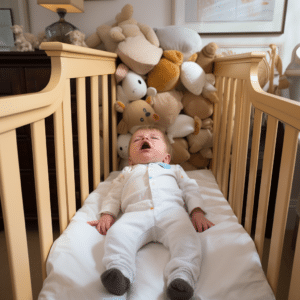
It must be noted that although a baby monitor can be beneficial. It shouldn’t replace the necessity of directly checking in on your baby in the nursery. Make sure they’re appropriately situated in the crib, comfy and safe.
Consider a Convertible Crib
As you seek to protect your baby from hitting their head against. The confines of their crib, a convertible crib may be the ideal choice. Not only do these cribs possess a lower profile than traditional models. Diminish potential injury risks due to mobility. But they also encourage a much longer-term investment—especially since. They can be converted into both toddler bed and daybed.
Sure, they might cost more upfront, but the overall benefits likely make it worth the extra spent. To help ensure the most bang for your buck, make sure that whatever convertible crib you purchase meets. Current safety standards and is crafted from reliable materials: if it ticks off those boxes. Then you can rest assured in its durability for years to come.
